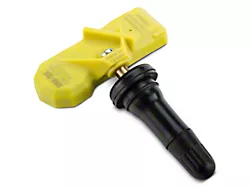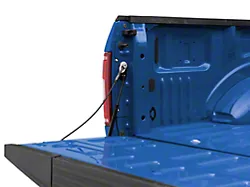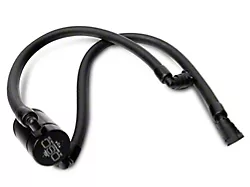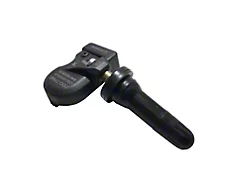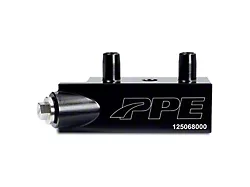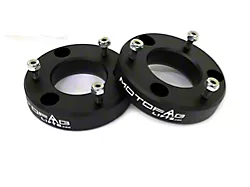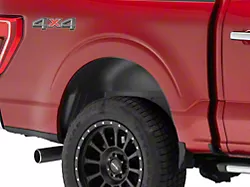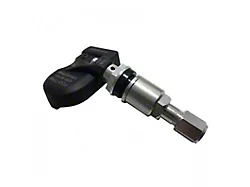
How to Install PIAA 540 Series 5 in. Round Ion Yellow Halogen Lights - Fog Beam - Pair on Silverado
Installation Time
30 hours
Tools Required
- Vinyl Electric Tape
- Diagonal cutters
- Phillips driver (medium
- Pliers
- 10 mm wrench
- 17mm wrench

1. Before connecting any wires, the negative (-) battery terminal should be disconnected.
When connecting the wires on the harness, follow the wiring diagram and connect them as in the diagram.
2. For proper lamp operation it is recommended that you connect the
positive ( ) and negative (-) power supply wires directly to the corresponding battery terminals.
Do not take power directl-y from the. alternator.
3. Find a power source to connect the switch power wire to.
For legal operation of fog lights, the power source must be one that is only powered when low beam of headlamps is on.To make this connection use the supplied connector or any connector that is suitable for this application.
Do not connect lights to turn signals or to lights that flash with an automotive alarm.
4. When running the wires through the engine compartment be sure to keep them securely away from moving parts such as the fan and the throttle cable and away from hot parts such as the exhaust manifold.
5. When the wiring is complete, test the system for operation. Do this by turning on the system. If the system works, securely fasten the relay boxes and fuse holders or tie them out of the way with wire ties. If the system does not come on, please contact your PIAA dealer for assistance.


LAMP INSTALLATION
• The installation area must be clean, and level with enough working space to do the job without distractions.
• The PIAA 540 lamps may be mounted upright or hanging down. It is very important that you make sure that the "PIAA" etched in the glass reads right side up. If it is not you must follow the "Lamp assembly/disassembly diagram" to flip the lens over.
• For the lamp system to function properly the supplied PIAA harness must be used.
• When mounting the lamps mount them in such a place that they are free of obstructions.
• Do not modify the lamp system in any way or it will void the warranty.
• Do not mount the lamp system in a place that may obstruct an existing automotive function.
• Do not mount the lamps in a place that they will come in contact with the road or curbs.
• When a mounting location is decided upon a I Omm hole will be needed to mount the lamp with the supplied mounting hardware. If a hole is not available one will have to be drilled. (Contact your local PIAA dealer for custom installation kits for many vehicles.)
• When lamp is mounted make sure to leave at least 1/8 inch clearance around the lamp to avoid heat damage to front spoilers and/or grills.
WIRING DIAGRAM

FOG LIGHT AIMING
There are two important issues to address when installing fog lights, the first is to minimize the amount of return glare into the drivers eyes, and the other is to minimize glare into oncoming eyes. Both of those issues must be accomplished while putting as much light as possible on the road.
These fog/foul weather light aiming instructions are suggestions taken from common practice and the S.A.E. standard J583. Some modifications to these instructions may be necessary to minimize glare.
Visual aim is made with the top of the beam 4 inches below the lamp center at 25 feet with the lamp facing straight forward. (See below.)
CAUTION:
Only use fog lights if they are aimed properly.
Fog lights should never be the only foreword light source.
Fog lights should be used with headlamp low beams.

DRIVING LIGHT AIMING
Typically, driving lights are mounted above the front bumper about 14-30 inches from the ground to provide extra high beam illumination. Driving lights can be mounted below the bumper, although they will not be as effective because the light will hit the ground sooner and reduce the range of the light.
Visual aim is made with the center of the beam hot spot 1.5 inches below the lamp center at 25 feet with the lamp facing straight forward. (see below.)

WARNING
• Lighting laws vary state to state, check your local laws before use.
• The lamps get very hot when they have been in use. Do not touch them as they may cause burns.
• After the lights have been on do not place them near flammable objects.
• Do not splash water directly on the hot lamps, as this may cause cracking of the lens due to dramatic change it temperature.
• Do not look directly into the light f the lamps as the bright light may cause eye damage.
• This light system may he used only as high beam auxiliary lighting.
• The lamps and relay harness are to be used only with I2 volt automotive electrical systems.
• Using this light system while the engine is not running will drain the battery.
• Do not repeatedly turn the light system on and off as it will shorten the life of the system.
• Some automobiles generate high voltage at start up and when it is turned off, do not have lights on as you start or turn off your vehicle.
• Using the wrong bulbs may cause a malfunction, use only specified PIAA bulbs.
• When changing bulbs or lenses follow the lamp assembly/disassembly diagram.
• Leave at least 118" clearance between the lamps and the front spoiler, as the heat may damage the spoiler.
